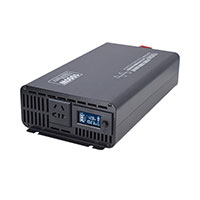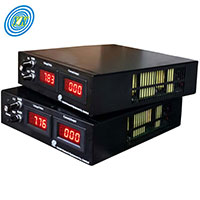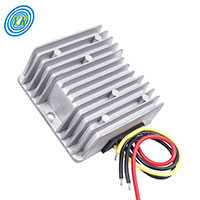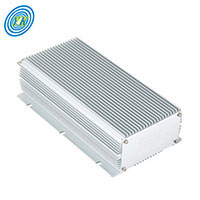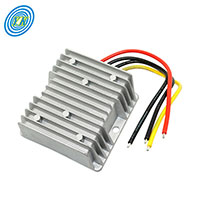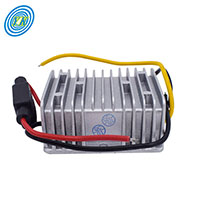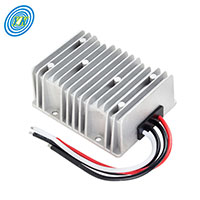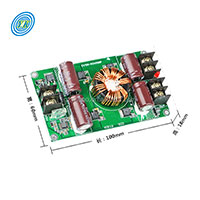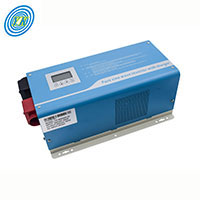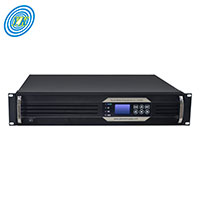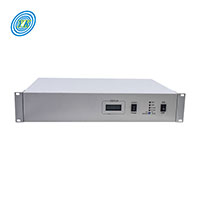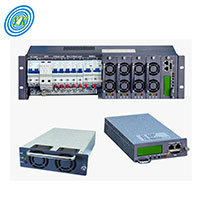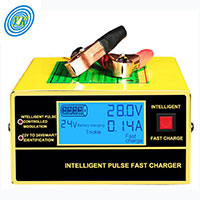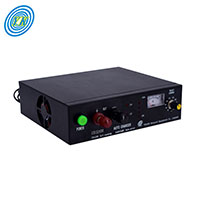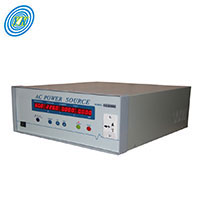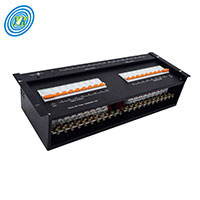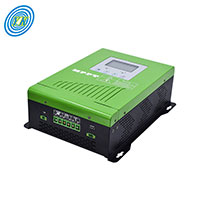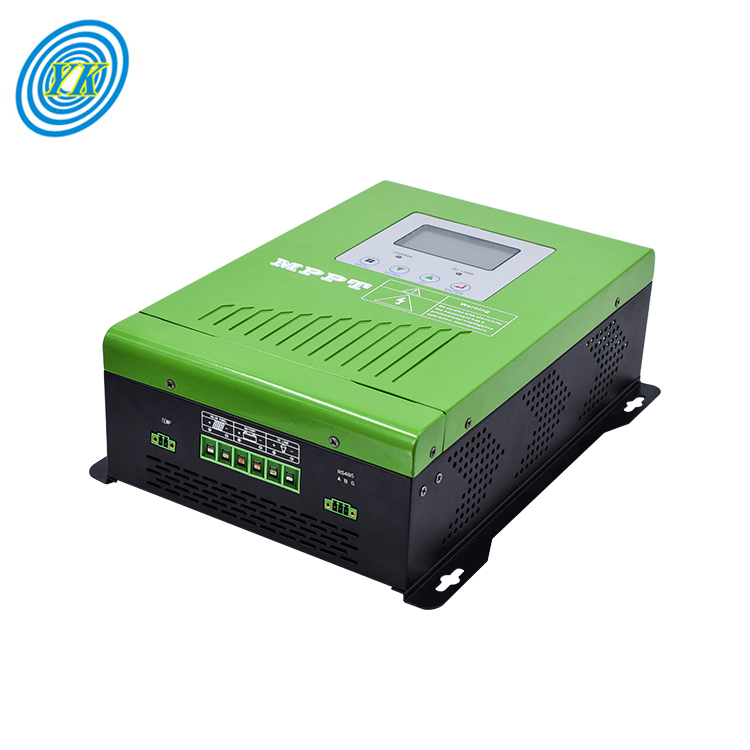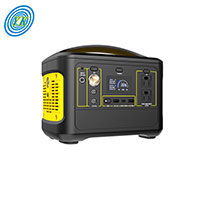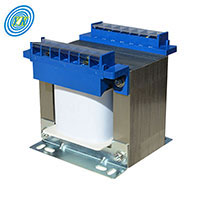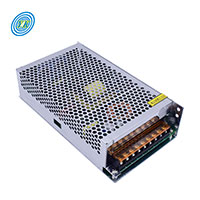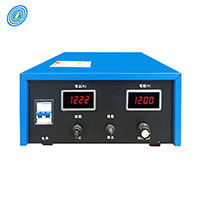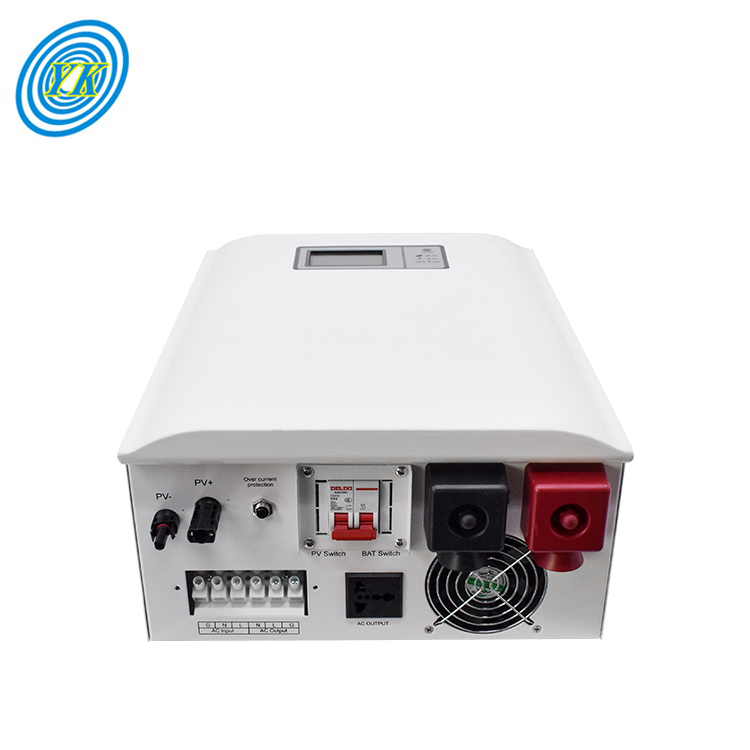
Click: 586 Date: 12/27/2023 2::39::04 PM
Maximizing Solar Energy Efficiency: An Examination of MPPT Inverters and YUCOO's Contributions to the FieldUnderstanding MPPT Controllers and Their Role in Solar Power Systemscaptured and stored. MPPT controllers are especially important in variable lighting conditions, as they can adjust to maximize power output as lighting conditions change.MPPT controllers work by continuously monitoring the output voltage and current of the solar panels and adjusting the resistance to achieve the maximum power output. They use various algorithms to track the maximum power point, such as the Perturb and Observe (P&O) method, the Incremental Conductance (IncCond) method, and the Constant Voltage (CV) method. These algorithms have their strengths and weaknesses, and the choice of algorithm can impact the efficiency and speed of the MPPT controller.One key challenge faced by MPPT controllers is dealing with partial shading conditions. When a solar panel is partially shaded, its output voltage-current characteristics change, leading to multiple power points. Traditional MPPT algorithms can get stuck in local maxima, leading to suboptimal power output. Various strategies have been proposed to deal with this issue, such as using multiple MPPT controllers, each controlling a separate string of panels, or implementing advanced algorithms that can identify and track the global maximum power point.In terms of hardware, MPPT controllers typically consist of a DC-DC converter, which adjusts the voltage and current levels, and a control circuit, which implements the MPPT algorithm. The DC-DC converter can be a buck converter, boost converter, buck-boost converter, or a more complex type like a Cuk converter or a SEPIC converter. The choice of converter topology depends on the specific requirements of the solar power system, such as the input and output voltage levels and the power rating.In conclusion, MPPT controllers are a crucial component of solar power systems, enabling them to operate at their maximum efficiency and deal with challenging conditions such as partial shading. They utilize a combination of hardware and software to continuously monitor and adjust the operation of the solar panels, ensuring that the maximum possible power is extracted at all times.Exploring the Wide Range of Components in MPPT InvertersMaximum Power Point Tracking (MPPT) inverters play a crucial role in solar power generation systems, converting the variable DC output from the solar panels into a clean sinusoidal 50-60 Hz AC current that can be used directly by household appliances or fed into a commercial electrical grid. The components of an MPPT inverter are integral to its function and performance.MPPT Controller: The heart of the MPPT inverter, it continuously adjusts the electrical load to maximize power output. It uses complex algorithms to track the maximum power point of the solar panels throughout the day.DC-AC Inverter: Converts the DC power from the solar panels into AC power. There are different types of inverters, including pure sine wave inverters, modified sine wave inverters, and square wave inverters. The choice of inverter impacts the efficiency and quality of power conversionHeat Sink: Dissipates heat produced during the power conversion process. A high-quality heat sink is crucial for maintaining the longevity and efficiency of the MPPT inverterFilters and Capacitors: Used to smooth out the voltage and current signals in the inverter. This helps to reduce noise and improve the quality of the output powerProtection Mechanisms: Include features such as short-circuit protection, over-temperature protection, and islanding protection. These mechanisms ensure the safe operation of the inverter and protect it from potential damageDisplay and Interface: Allows users to monitor the performance of the solar power system. Some advanced interfaces may also provide remote monitoring and control capabilitiesBy understanding the components of an MPPT inverter, one can better appreciate the complexity and sophistication of these devices, and the innovative technology that allows for efficient solar power generation.Revenue and Cost Considerations in MPPT Inverter DeploymentWhen considering the deployment of Maximum Power Point Tracking (MPPT) inverters, there are several key revenue and cost factors to take into account:1. Efficiency of Power Conversion: MPPT inverters play a crucial role in optimizing the conversion of solar energy into electrical energy. The efficiency of this conversion process directly impacts the potential revenue generated from a photovoltaic system. Better efficiency leads to higher energy production and therefore, higher potential revenue.2. Cost of MPPT Inverters: The initial investment cost of MPPT inverters can be significant. However, it's important to consider the long-term savings that these devices provide through enhanced energy production. High-quality inverters can be costly upfront, but their durability and performance can result in lower maintenance costs and longer service life.3. Operational and Maintenance Costs: The operational and maintenance costs of MPPT inverters need to be factored in. These costs can vary depending on the complexity of the system, the quality of the inverter, and the environmental conditions where the system is installed. For instance, inverters operating in harsh environmental conditions might require more frequent maintenance, incurring additional costs.4. Regulatory Policies and Incentives: Government policies and incentives can significantly impact the revenue and costs associated with MPPT inverters. For instance, feed-in tariffs or renewable energy certificates can provide additional revenue streams for energy producers. Conversely, changes in regulatory policies can also introduce additional costs or reduce potential revenue.5. Technological Advancements: Innovations in MPPT inverter technology can lead to improved performance and reduced costs. For instance, advancements in power electronics and control algorithms can enhance the efficiency of MPPT inverters, thereby increasing potential revenue. On the other hand, the cost of implementing these new technologies needs to be considered.In conclusion, the deployment of MPPT inverters involves a careful analysis of the potential revenue and costs associated with their installation and operation. This includes considering the efficiency of power conversion, initial investment costs, operational and maintenance costs, the impact of regulatory policies, and the potential benefits of technological advancements.The Impact of Different Operational Modes on MPPT InvertersThe operational mode of an MPPT inverter can significantly influence its performance, efficiency, and overall functionality. Here are some key points to consider:Engineering Procurement Construction (EPC): In this mode, the inverter is part of a larger system that is designed, procured, and constructed as a whole. The performance of the inverter is thus intertwined with the efficiency of the entire system, requiring careful coordination and integration.Public—Private—Partnership (PPP): In a PPP mode, the inverter is typically used in large-scale projects involving both public and private entities. The operational efficiency, cost-effectiveness, and reliability of the inverter can have significant impacts on the success of the project.Built-Transfer (BT): In BT mode, the inverter is part of a system that is built by one entity and then transferred to another. The robustness, durability, and maintenance requirements of the inverter are particularly important in this mode.Energy Management Contracting (EMC): In an EMC mode, the inverter is central to energy management strategies that aim to improve efficiency and reduce costs. The ability of the inverter to adapt to varying conditions and maintain optimal performance is critical.Vehicle to Grid (V2G): In V2G mode, the inverter is used to facilitate the flow of energy between electric vehicles and the power grid. The inverter must be able to handle fluctuating demand and supply conditions, and ensure smooth and efficient power transfer.Each of these modes presents its own unique challenges and requirements, and the inverter must be designed and configured to meet these effectively. Understanding these operational modes can help in optimizing the performance of MPPT inverters and enhancing the overall efficiency of solar power systems.The Role of YUCOO in Advancing MPPT Inverter TechnologyThe operational mode of an MPPT inverter can significantly influence its performance, efficiency, and overall functionality. Here are some key points to consider:Engineering Procurement Construction (EPC): In this mode, the inverter is part of a larger system that is designed, procured, and constructed as a whole. The performance of the inverter is thus intertwined with the efficiency of the entire system, requiring careful coordination and integration.Public—Private—Partnership (PPP): In a PPP mode, the inverter is typically used in large-scale projects involving both public and private entities. The operational efficiency, cost-effectiveness, and reliability of the inverter can have significant impacts on the success of the project.Built-Transfer (BT): In BT mode, the inverter is part of a system that is built by one entity and then transferred to another. The robustness, durability, and maintenance requirements of the inverter are particularly important in this mode.Energy Management Contracting (EMC): In an EMC mode, the inverter is central to energy management strategies that aim to improve efficiency and reduce costs. The ability of the inverter to adapt to varying conditions and maintain optimal performance is critical.Vehicle to Grid (V2G): In V2G mode, the inverter is used to facilitate the flow of energy between electric vehicles and the power grid. The inverter must be able to handle fluctuating demand and supply conditions, and ensure smooth and efficient power transfer.Each of these modes presents its own unique challenges and requirements, and the inverter must be designed and configured to meet these effectively. Understanding these operational modes can help in optimizing the performance of MPPT inverters and enhancing the overall efficiency of solar power systems.
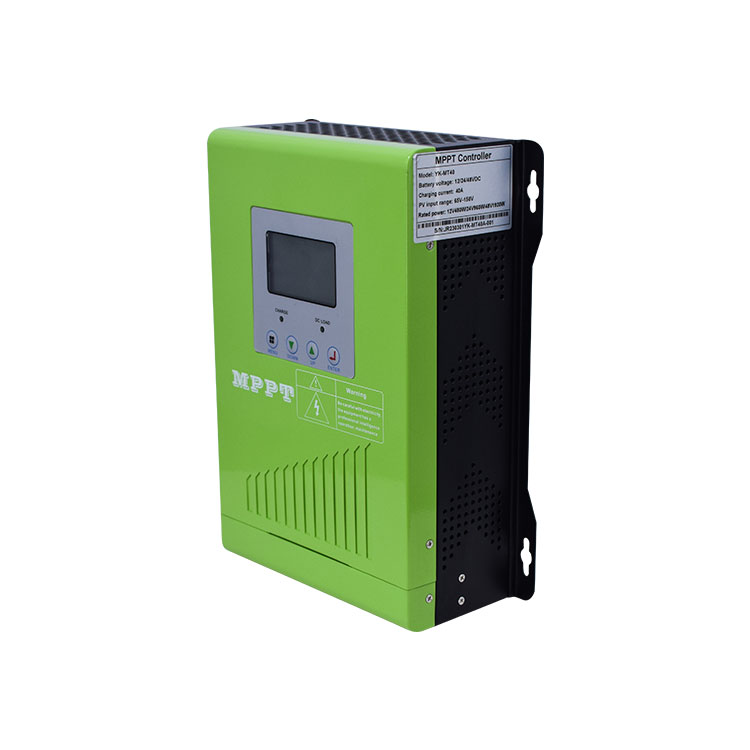
Click: 654 Date: 12/26/2023 10::32::50 AM
YUCOO's MPPT Controllers: Enhancing Solar Energy Efficiency through Advanced Algorithms and Innovative Control TechniquesUnderstanding the Role of MPPT Controllers in Solar Energy SystemsMPPT (Maximum Power Point Tracking) controllers play a crucial role in solar energy systems. They work by continuously monitoring the output of a solar panel and adjusting the load on the panel to keep it operating at the maximum power point (MPP).MPPT controllers are designed to optimize the charging of batteries in solar systems. By decreasing the voltage of the battery (discharging the battery), the MPPT controller can ensure that the battery is fully charged. This is particularly useful in situations where the battery is nearing full capacity.The output power of a PV system largely depends on the surrounding temperature and irradiance. MPPT techniques aim to force the PV system's characteristics to operate at the MPP, thereby exploiting the available energy from PV at a certain temperature and irradiance conditions by regulating the DC–DC converter's duty cycle.There are several MPPT algorithms that have been proposed, including the Perturbation and Observation (P&O) method. However, these methods may suffer from high computational load and require users to adapt the perturb step size. To address these issues, various techniques have been developed to convert traditional MPPT into adaptive MPPT.In conclusion, MPPT controllers play a vital role in maximizing the efficiency of solar energy systems. They allow for optimal charging of batteries and efficient operation of PV systems under varying environmental conditions.The Efficiency and Versatility of YUCOO's MPPT ControllersYUCOO's MPPT controllers stand out as top-notch products in the market due to their high efficiency, advanced tracking algorithms, and robust features such as data logging and remote monitoring capabilities. They are designed to maximize the performance and lifespan of solar PV systems, making them a worthwhile investment.These controllers are renowned for their ability to track the maximum power point of solar panels, ensuring the most efficient energy extraction at any given time. They are known for their high efficiency, converting excess voltage into amperage to achieve nearly 30% more efficiency than traditional PWM controllers.What sets YUCOO's MPPT controllers apart is their versatility. They can be used with a wide range of solar panel inputs with various voltage outputs, converting high voltage outputs from solar panels into a lower voltage suitable for battery charging.YUCOO's MPPT controllers also use advanced algorithms to track the maximum power point accurately, even under changing weather conditions. Additionally, they come with extra features like data logging, remote monitoring, and control capabilities, enhancing user convenience and system management.As a leading manufacturer of MPPT controllers, YUCOO offers a variety of products employing different tracking techniques. Their controllers are designed for high efficiency, flexibility, and reliability, catering to a wide range of solar PV systems. There are also hybrid MPPT controllers that combine the strengths of different tracking techniques to optimize performance under all conditions.Choosing a quality MPPT controller is critical to the efficiency and longevity of your solar PV system. Key considerations include compatibility with your solar panel system in terms of voltage and current ratings, high efficiency, a suitable tracking algorithm for your needs and local weather conditions, additional features like data logging, remote monitoring, and control capabilities, and robustness and durability of the controller.In conclusion, YUCOO's MPPT controllers are a testament to the company's commitment to quality and innovation. They offer high efficiency, versatility, and come with advanced features for improved user experience. Their scalability makes them a suitable choice for both small and large solar installations.Advanced MPPT Control Algorithms Used in YUCOO's ControllersYUCOO's MPPT controllers utilize advanced algorithms to ensure accurate maximum power point tracking, even under fluctuating weather conditions. These controllers are designed for high efficiency and come with robust features such as data logging and remote monitoring capabilities. They are known for their ability to convert excess voltage into amperage, which results in nearly 30% more efficiency compared to traditional PWM controllers. Additionally, they possess versatility, being able to operate with a wide range of solar panel inputs with various voltage outputs.The advanced algorithms used in YUCOO's MPPT controllers play a crucial role in their performance. One such algorithm is the Perturb and Observe (P&O) method, which is the most commonly used technique in MPPT controllers. It works by slightly altering the system's operating voltage and observing the impact on the power output. If the power output increases, the perturbation continues in the same direction. If it decreases, the perturbation is reversed.Another algorithm is the Incremental Conductance (IncCond) method. This method is more complex than P&O but offers better performance under rapidly changing atmospheric conditions. It operates on the principle that the derivative of the power with respect to voltage is zero at the maximum power point and uses this fact to track the maximum power point.Lastly, the Constant Voltage (CV) method is another algorithm used by YUCOO's MPPT controllers. This method assumes a fixed relationship between the maximum power point voltage and the open-circuit voltage. Although this technique is simpler than the others, it may not always be accurate as the relationship can vary based on atmospheric conditions.In conclusion, YUCOO's MPPT controllers leverage advanced algorithms to optimize power extraction from solar panels under varying conditions. Their high efficiency, versatility, and robust features make them a preferred choice for many customers worldwide.The Impact of MPPT Controllers on Distributed Photovoltaic Array SystemsThe impact of MPPT (Maximum Power Point Tracking) controllers on distributed photovoltaic (PV) arrays is significant. These controllers play a crucial role in enhancing the efficiency of PV systems and ensuring optimal performance under varying environmental conditions.MPPT controllers are integral to grid-integrated photovoltaic (GI) systems. They convert the energy from the sun into DC power, which is then transformed into AC power by a transformer that works in conjunction with the MPPT controller. This AC power can then be supplied to an electrical grid.However, the rise in the number of GI systems poses numerous technological and economic challenges. For instance, the strain on the utility grid during the transition from high peak generation hours to off-peak generation hours is one issue. Another challenge is the 'peak shaving' phenomenon, where generation peaks exceed the peak load. Additionally, the unpredictability associated with installations of GI systems adds to the complexity.To address these challenges, researchers have explored a variety of methodologies, including transformer-less inverters, solar tracking, and MPPT. The goal is to enhance the efficiency of PV systems and provide ancillary services like VAR power management, frequency control, and energy storage.Another aspect to consider is the value of the input capacitors, which significantly influence the lifespan of power electronic converters. Therefore, a new decoupling circuit is needed. Moreover, the efficiency of the new power electronic devices should be improved by applying soft switching techniques. These technologies not only enhance the PV system's efficiency but also prolong the life of the power electronic converters.In conclusion, the impact of MPPT controllers on distributed PV arrays is profound. They enhance the efficiency of PV systems, address technological and economic challenges, and contribute to the development of new power electronic devices. However, continuous research and innovation are necessary to further optimize their performance and effectiveness.Exploring the Future: Constant and Flexible Photovoltaic Power Point ControlAs solar energy technologies advance, so does the need for efficient and flexible control strategies for photovoltaic power generation. Two emerging trends in this field are the development of constant power tracking and flexible power tracking algorithms.Constant power tracking algorithms aim to maintain a steady power output from the solar array, regardless of changes in sunlight intensity or temperature. These algorithms can help optimize the efficiency of solar power generation by ensuring the photovoltaic array operates at its maximum power point for a longer period of time.On the other hand, flexible power tracking algorithms allow the photovoltaic array to adjust its operation according to changing environmental conditions. For instance, during periods of high sunlight intensity, these algorithms enable the array to operate at higher power points, thereby maximizing power output. However, they also ensure that the array operates at lower power points during periods of low sunlight intensity, thus preventing potential damage to the equipment.These advanced control techniques represent the future direction of photovoltaic power point control, offering improved efficiency and adaptability in response to varying environmental conditions. As such, they hold great promise for enhancing the overall performance and reliability of solar power systems.
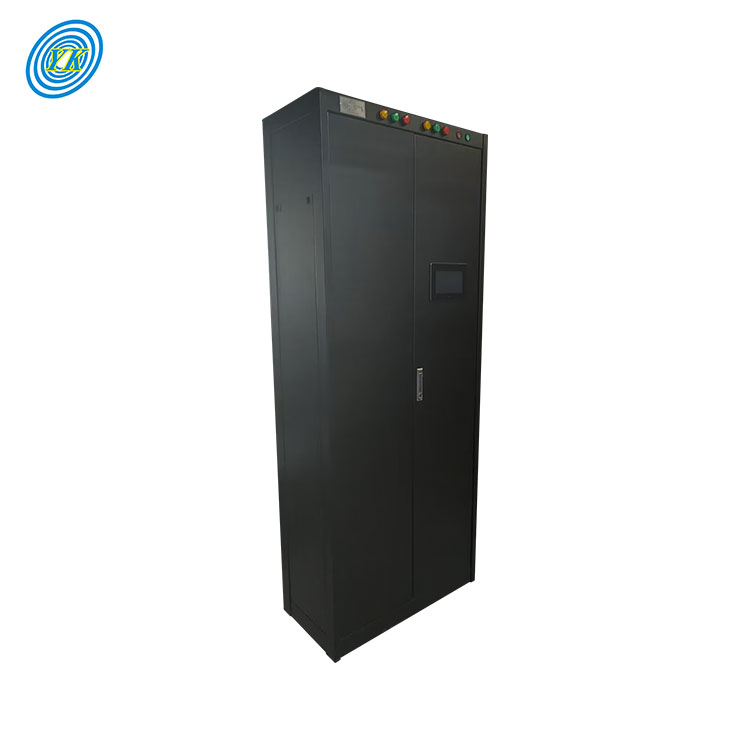
Click: 654 Date: 12/25/2023 2::50::20 PM
Exploring YUCOO's Power Distribution Cabinets: Design, Functionality, Special Features, Applications, and ImportanceYUCOO, a reputable manufacturer of power distribution cabinets, designs its products with a fully enclosed structure. This structure includes side panels, bottom plates, top plates, and front and rear doors. The design of the cabinet aims to ensure operational safety, reliability, and ease of maintenance and inspection.The fully enclosed structure of YUCOO's power distribution cabinets provides several benefits:Safety: The enclosed structure protects the internal components from physical damage and reduces the risk of accidental contact with live electrical components, enhancing safety.Reliability: The robust construction of the cabinet ensures it can withstand harsh conditions and operate reliably over a long period.Ease of Maintenance and Inspection: The design of the cabinet allows for easy access to all internal components, making it easier to carry out maintenance and inspection tasks. This can help to prevent electrical issues from developing and ensure the system continues to operate efficiently .Additionally, the surface of YUCOO's power distribution cabinets is coated with a non-glare layer that is smooth and uniform in color, with no flow marks or exposure. The metal parts of the cabinet are without burrs or rust, further enhancing its durability and longevity.In conclusion, the design and structure of YUCOO's power distribution cabinets contribute significantly to their performance and longevity, making them an excellent choice for various applications.YUCOO's power distribution cabinets are designed to handle a variety of conditions that might occur during operation, such as heat, electric arc, impact, vibration, magnetic field, or electric field. These cabinets are engineered to ensure that these conditions do not affect the normal functioning of other electrical components. This capability contributes to the overall reliability and safety of the operations that these cabinets support.In terms of power distribution, YUCOO's cabinets offer a completely independent dual circuit power supply to one or multiple network cabinets. This feature allows for efficient power distribution and reduces the risk of circuit overloads.YUCOO's emphasis on quality and safety is also evident from the fact that their cabinets are made from high-quality materials, ensuring durability and longevity. The company continually invests in research and development to improve their products and meet the evolving needs of their customers.In conclusion, the functionality of YUCOO's power distribution cabinets extends beyond simple power distribution. They are designed to withstand various operational conditions and offer a reliable and safe solution for power management in a variety of settings.One of the standout features of YUCOO's power distribution cabinets is the incorporation of an intelligent monitoring system. This system offers real-time monitoring of switch status and load conditions of the power distribution system, ensuring that the system is operating optimally and safely at all times.The intelligent monitoring system is capable of monitoring a wide range of input electrical parameters and output branch electrical parameters. Input parameters might include voltage, current, frequency, power, and power factor, while output parameters can include rated current, actual current, load percentage, load current harmonic percentage, load power, and power factor.This comprehensive monitoring capability provides users with a clear understanding of the operation of each device, the overall load distribution, and the power consumption of each cabinet. This information can be used to adjust the load distribution in real-time, ensuring efficient operation and preventing potential issues such as overloading.In conclusion, the intelligent monitoring system in YUCOO's power distribution cabinets is a key feature that enhances the functionality and reliability of these cabinets, providing users with valuable insights for energy efficiency management and facilitating proactive maintenance activities.YUCOO's power distribution cabinets find applications in numerous settings, each with unique requirements:Data Centers and Large Network Rooms: Power distribution cabinets, such as those manufactured by YUCOO, play a crucial role in managing and distributing power supply in data centers and large network rooms. They ensure operational safety and reliability, and also provide valuable data for energy efficiency management.Industrial Settings: In industrial settings, power distribution cabinets are integral to operations. They are typically larger and more robust, designed to withstand harsh environments and high power loads. These cabinets may also include monitoring systems to track power usage and identify potential issues.Residential and Commercial Buildings: In residential and commercial buildings, power distribution cabinets are used to divide the main power supply into smaller circuits for different areas of the building. The cabinets provide a central location where homeowners or building managers can control and shut off power to specific areas as needed.Telecommunications: YUCOO's power distribution cabinets are also used in telecommunications power systems. They ensure the necessary power supply for telecom equipment to function reliably and efficiently.Renewable Energy Systems: In renewable energy systems, such as solar or wind power, power distribution cabinets are used to manage and distribute the generated power. They play a crucial role in the efficient operation of these systems.In conclusion, YUCOO's power distribution cabinets are versatile and adaptable, making them suitable for a wide range of applications in various sectors.Power distribution cabinets, such as those manufactured by YUCOO, play a pivotal role in ensuring operational safety and reliability in various settings, from data centers and large network rooms to industrial, residential, and commercial buildings. They are designed to handle a variety of conditions such as heat, electric arc, impact, vibration, magnetic field, or electric field produced by each electrical component during operation without affecting the normal functioning of other electrical components.Moreover, YUCOO's power distribution cabinets provide a completely independent dual circuit power supply to one or multiple network cabinets, which allows for efficient power distribution and reduces the risk of circuit overloads.Another essential feature of YUCOO's power distribution cabinets is the intelligent monitoring system. This system provides real-time monitoring of switch status and load conditions of the power distribution system. It is capable of monitoring a wide range of input electrical parameters and output branch electrical parameters. This comprehensive monitoring capability provides users with a clear understanding of the operation of each device, the overall load distribution, and the power consumption of each cabinet.By providing valuable data, YUCOO's power distribution cabinets allow users to adjust the load distribution in real-time, ensuring efficient operation and preventing potential issues such as overloading. This information is crucial for energy efficiency management, which is a significant concern in many usage scenarios due to the high power consumption of devices.In conclusion, the importance of power distribution cabinets in various usage scenarios cannot be overstated. They not only ensure operational safety and reliability but also provide valuable data for energy efficiency management. YUCOO's power distribution cabinets, with their robust design, advanced features, and intelligent monitoring system, make a significant contribution to this essential aspect of power management.
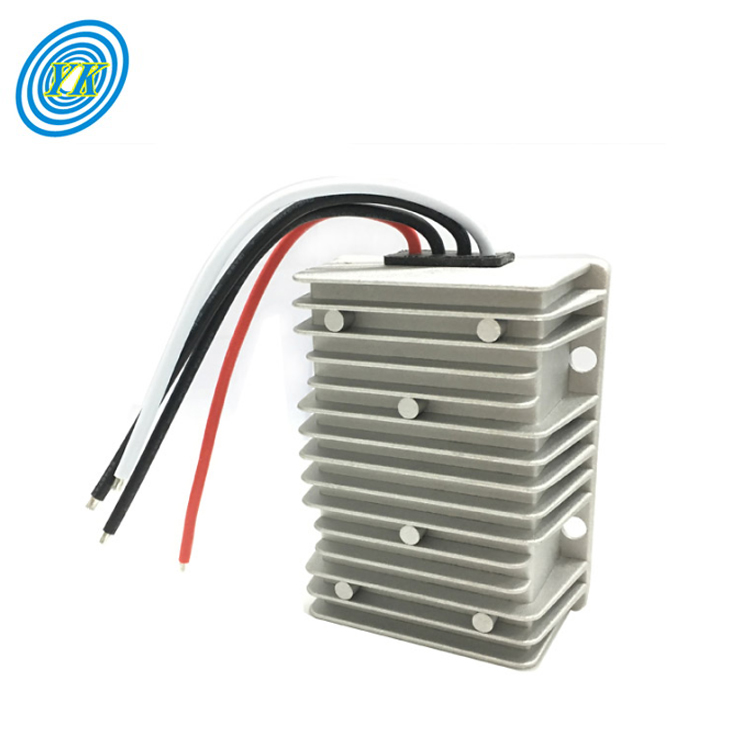
Mastering DC Power Conversion: From Basics to Advanced Techniques
Click: 679 Date: 12/22/2023 4::33::41 PM
Mastering DC Power Conversion: From Basics to Advanced TechniquesUnderstanding DC-DC Converters: An Essential GuideIn this guide, we will focus on YUCOO's DC-DC converters. YUCOO is a leading manufacturer in the power supply industry with over 20 years of experience, specializing in the design and production of DC-DC converters. The company offers a wide range of DC converters, including Buck, Boost, and Isolated converters, catering to various applications and industries such as consumer electronics, automotive systems, and renewable energy solutions.YUCOO's Buck DC/DC converters are designed to step down voltage, making them particularly useful in applications like bus systems, where they ensure a stable and reliable power supply. The company's Boost DC/DC converters, on the other hand, are designed to step up voltage, which is essential in battery-operated devices where the battery voltage needs to be boosted to power certain components.Moreover, YUCOO's isolated DC/DC converters are equipped with an electrical barrier between the input and output, providing isolation that protects sensitive components from electrical noise or voltage spikes.In conclusion, YUCOO's commitment to quality, innovation, and customer satisfaction, as well as their diverse range of products, makes them a reliable and leading choice in the DC/DC converter industry.Efficiency Improvement Techniques in DC Power ConversionEfficient power conversion is a critical aspect of many electronic systems, and DC (Direct Current) power conversion plays a pivotal role in this process. Yucoo, a leading power supply manufacturer, has been harnessing advanced technologies to improve the efficiency of their DC power conversion products.One of the key strategies employed by Yucoo to improve efficiency is the use of advanced power conversion technologies to minimize power losses and maximize energy conversion. This is particularly crucial in applications such as electric vehicle charging stations, where energy-efficient converters can significantly reduce power consumption.Yucoo offers a wide range of DC converters, including Buck, Boost, and Isolated converters, each with its own unique efficiency improvement features. For example, Yucoo's Buck DC/DC converters are designed to step down voltage efficiently, ensuring a stable and reliable power supply in applications like bus systems. On the other hand, their Boost DC/DC converters are designed to step up voltage efficiently, which is essential in battery-operated devices where the battery voltage needs to be boosted to power certain components.In addition to the use of efficient converter designs, Yucoo also employs advanced control techniques and careful circuit design to minimize noise, which can contribute to improved overall efficiency. Selecting high-quality components with low resistance and low power losses is another way that Yucoo ensures the efficiency of their DC power conversion products.Moreover, Yucoo's isolated DC/DC converters are equipped with an electrical barrier between the input and output, providing isolation that protects sensitive components from electrical noise or voltage spikes, further enhancing the efficiency of the power conversion process.In conclusion, Yucoo's commitment to harnessing advanced technologies and high-quality components, coupled with their innovative converter designs, has positioned them as a leader in efficient DC power conversion. As the world continues to evolve towards a more energy-efficient future, Yucoo's DC power conversion products will undoubtedly play a crucial role in this transformation.Circuit Design Strategies for DC-DC ConvertersWhen designing circuits for DC-DC converters, there are many factors to consider. This includes the type of converter being used (Buck, Boost, or Isolated), the desired efficiency, noise considerations, and the specific application requirements. One key aspect to consider is the use of high-quality components, as this can help to minimize noise and improve the overall performance of the converter. Additionally, advanced control techniques and careful circuit design can greatly enhance the efficiency and reliability of the converter.YUCOO, a leading manufacturer in the power supply industry, has over 20 years of experience in the design and production of DC-DC converters. They offer a wide range of DC converters, including Buck, Boost, and Isolated converters, which cater to various applications and industries. YUCOO's Buck DC-DC converters and Boost DC-DC converters are designed to step down and step up voltage respectively, making them useful in a wide variety of applications.For instance, YUCOO's transformer buck DC/DC converter is designed to step down voltage from 48V to 12V with a 30A output. This converter is particularly useful in applications like bus systems, demonstrating YUCOO's commitment to developing specialized power supply solutions.Furthermore, YUCOO's isolated DC/DC converters are equipped with an electrical barrier between the input and output. This feature provides isolation that protects sensitive components from electrical noise or voltage spikes. In addition to these, YUCOO also offers other types of converters, such as adjustable DC power supplies and bared board DC-DC converters.In terms of circuit design strategies, YUCOO likely employs a combination of advanced control techniques for precise and flexible control of their DC/DC converters. These strategies may include the ability to dynamically adjust the output voltage in response to changes in load or input conditions.In conclusion, when designing circuits for DC-DC converters, it's important to consider the type of converter, the desired efficiency, noise considerations, and the specific application requirements. Companies like YUCOO demonstrate how these considerations can be effectively integrated into the design and production of a wide range of DC-DC converters.Voltage Regulation in DC Power Conversion: A Comprehensive Analysis1. Introduction to Voltage Regulation in DC Power ConversionVoltage regulation in DC power conversion is the process of maintaining a constant output voltage despite variations in the input voltage or load conditions. It's a necessary process in many electronic devices and systems to ensure they operate correctly.2. The Importance of Voltage RegulationThe importance of voltage regulation comes from its role in preserving the functionality and lifespan of electronic devices and systems. An unstable voltage can lead to performance issues or even damage. Yucoo's DC power converters are designed with voltage regulation in mind, ensuring a stable output for various applications.3. How Yucoo's DC Power Converters Achieve Voltage RegulationYucoo's DC power converters achieve voltage regulation through advanced circuit design and high-quality components. They offer a range of DC-DC converters, including the YKDD12S5** series, YKDD24S12** series, and YKDD3648S5** series, which are all designed to provide stable output voltages.4. The Impact of Voltage Regulation on the Performance of Yucoo's DC Power ConvertersVoltage regulation significantly impacts the performance of Yucoo's DC power converters. By maintaining a stable output voltage, these converters can reliably power various devices and systems, ensuring their proper operation.5. ConclusionIn conclusion, voltage regulation is a crucial aspect of DC power conversion, and companies like Yucoo are at the forefront of this technology. With their range of DC power converters, Yucoo continues to provide reliable and efficient power conversion solutions for various applications.Exploring the Impact of Inrush Current in DC Power ConversionThe inrush current in DC power conversion is a crucial factor to consider. When a power supply is initially turned on, the inrush current can be significantly higher than the steady-state current. This is because at the initial moment of power-up, the input capacitors are uncharged and present a low impedance path, drawing a large amount of current. This phenomenon can lead to several issues, such as blowing of fuses, tripping of circuit breakers, and even damage to components due to the high heat generated.To mitigate the impact of inrush current, a control circuit can be implemented. This circuit can be designed using a single Metal–Oxide–Semiconductor Field-Effect Transistor (MOSFET) switch and some small passive elements. The circuit works by limiting the initial current surge when the power supply is first turned on, gradually allowing more current as the input capacitors charge up. This approach not only protects the power supply components but also ensures a smooth startup operation.When we look at specific DC power conversion devices, for instance, the Yucoo power supply, the importance of managing inrush current becomes even more evident. Yucoo's DC power converters are known for their high efficiency and reliability. However, like any other power supply, they can be subjected to high inrush current during the initial power-up. Implementing an inrush current controlling circuit as described above can significantly enhance the performance and longevity of Yucoo power supplies.In conclusion, managing the inrush current in DC power conversion is vital to ensure the smooth operation and longevity of the power supply equipment. By using appropriate control circuits, we can effectively mitigate the impact of inrush current and enhance the performance of power supplies such as those provided by Yucoo.
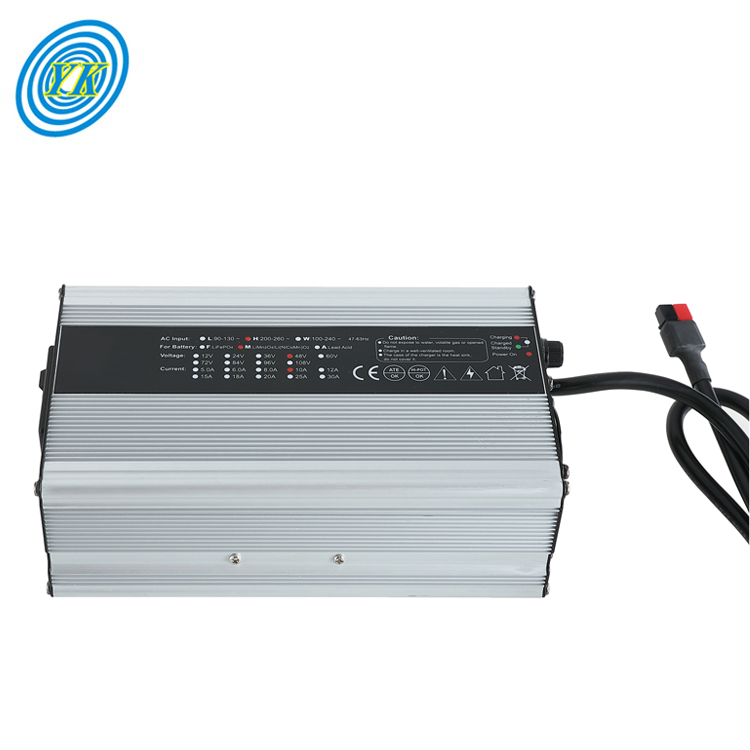
Understanding the Evolution and Impact of Modern Charging Technologies: A Focus on YUCOO Chargers
Click: 575 Date: 12/21/2023 4::26::45 PM
Understanding the Evolution and Impact of Modern Charging Technologies: A Focus on YUCOO ChargersExploring the Functionality of On-Board ChargersOn-board chargers (OBCs) are integral components of electric vehicles (EVs), responsible for converting alternating current (AC) from the power grid into direct current (DC) to charge the vehicle's battery. This process of conversion is essential because while our power grids supply AC due to its higher transmission efficiency and safety, batteries can only store and operate on DC.AC, due to its changing direction, frequency, magnitude, and phase over time, can induce changes in the direction and magnitude of magnetic fields. This feature enables AC to reduce electromagnetic interference and line impedance, thereby achieving higher energy transmission efficiency and lower energy loss over long distances. On the other hand, DC is unidirectional, and its magnitude does not change over time. This results in a decrease in power transmission as it travels further. Due to these reasons, most appliances use AC motors.When it comes to batteries, they can only store unidirectional or polarized current, making them inherently DC sources. This creates a challenge as our power grids supply AC, but charging batteries requires DC. This is where OBCs come into play. They convert the high-voltage AC supplied by the power grid or external charging stations into low-voltage DC (through a Battery Management System) and then supply it to the battery for charging.An OBC typically consists of three main parts: the input circuit that transfers AC from the power grid into the on-board charger, the control circuit responsible for monitoring and adjusting parameters such as current, voltage, and temperature, and the output circuit that delivers the converted DC to the EV's battery pack.However, the charging process of an EV is not just about going from the power grid, through the OBC, and then converting AC to DC. It also involves the charging station, charging cables, charging plugs, vehicle socket interfaces, and commands from the Battery Management System (BMS), or DC/DC transformers, to transform the voltage before charging the EV's battery.In conclusion, OBCs play a crucial role in EVs by ensuring the smooth conversion from AC to DC, thereby enabling the efficient charging of the vehicle's battery from the power grid. As EV technology continues to evolve, we can expect advancements in OBC functionality and efficiency.The Advantages of Intelligent Chargers in Modern DevicesIntelligent chargers, also known as smart chargers, have revolutionized the way we power our modern devices. They come with several advantages that make them an essential part of our daily lives.One of the main advantages of intelligent chargers is their ability to adapt to the power requirements of the device they are charging. Unlike traditional chargers, which deliver a fixed power output, intelligent chargers can detect the device's power needs and adjust the power output accordingly. This ensures maximum efficiency and safety during the charging process, reducing the risk of overheating or damaging the device's battery.Another advantage of intelligent chargers is their increased efficiency. They employ advanced communication protocols to optimize power transfer and minimize energy wastage. This makes the charging process more efficient and environmentally friendly.Intelligent chargers also offer broader compatibility. They can be used with a wider range of devices, from smartphones and tablets to laptops and IoT devices. This is due to their adaptive charging capabilities and higher power outputs.Intelligent chargers are also equipped with advanced safety features. For instance, they incorporate better heat management systems and more precise foreign object detection mechanisms. This ensures that the charging process is safe and that the device being charged is protected from potential damage.Lastly, intelligent chargers offer consistency in charging. They ensure that devices are always in the optimal position for charging, providing a consistent charging experience every time. This removes the guesswork from the user and makes the charging process more convenient.In conclusion, intelligent chargers offer several advantages that make them an essential tool in our modern world. They provide a safer, more efficient, and more convenient way to charge our devices, meeting the growing demands of today's tech-savvy users and the next generation of devices.The Rising Popularity of Wireless ChargersThe shift towards wireless charging is becoming more evident as technology continues to evolve. Initially perceived as a novelty, wireless charging has now become an essential part of our daily lives, thanks to its convenience and versatility.Wireless charging technology has seen significant growth and adoption in recent years. The global market for wireless charging surpassed USD 12 billion in 2022 and is expected to grow at a compound annual growth rate (CAGR) of over 25% between 2023 and 2032. This growth is largely driven by increasing reliance on smart IoT devices and the burgeoning ICT sector worldwide.The appeal of wireless chargers is primarily due to their compact design and ease of installation. They can be set up almost anywhere without requiring significant changes to home or office setups. Moreover, with the evolution of wireless charging standards, most wireless chargers today can accommodate a variety of Qi-ready devices.Despite its rapid growth, the wireless charging technology does face some challenges. High costs compared to wired alternatives may limit its adoption, particularly in underdeveloped regions. Furthermore, wireless chargers that are designed to power multiple devices simultaneously tend to be more expensive.Another challenge is the potential for interference with other devices. Some wireless chargers operate on similar frequencies to Wi-Fi routers, and as the strength of these chargers increases, the likelihood of interference also increases.Despite these challenges, the future of wireless charging looks promising. Continuous technological upgrades in the IT sector and improvements in battery life due to tech innovations are expected to create lucrative opportunities for the industry. With ongoing research and development, it is anticipated that the range and efficiency of wireless chargers will continue to improve, further driving their adoption.The Impact of Fast Chargers on Device PerformanceFast charging technology has made significant strides in recent years, offering users the convenience of recharging their devices in a fraction of the time it once took. However, this technology's impact on device performance is a topic of ongoing discussion.One of the primary advantages of fast chargers is their ability to significantly reduce the amount of time needed to recharge a device. This is particularly beneficial for devices that are heavily used throughout the day, such as smartphones and laptops, as it allows users to quickly recharge their devices and continue using them with minimal disruption.However, the use of fast chargers can also have potential drawbacks. One such drawback is that the rapid influx of power can generate a significant amount of heat, which can potentially lead to issues such as overheating, reduced battery lifespan, and even damage to the device in extreme cases. This is particularly relevant for devices that are not specifically designed to handle fast charging, as they may not have the necessary safeguards in place to handle the increased heat production.Furthermore, there is also the consideration of battery health. While fast charging can fill a battery quickly, it can also strain the battery if used consistently over a long period of time. This can lead to a reduction in the overall lifespan of the battery, requiring users to replace their batteries more frequently.In conclusion, while fast chargers offer numerous benefits in terms of reduced charging times, they can also potentially impact device performance and longevity. Therefore, users need to balance the convenience of fast charging with the potential impact on their device's performance and lifespan.The Role of High-Capacity Chargers in Powering Large DevicesHigh-capacity chargers play a crucial role in powering large devices, providing them with the necessary energy to operate efficiently and effectively. These chargers are often used in industries where energy demand is high, such as electric vehicles, data centers, or heavy machinery operations.The concept of high-capacity charging is not new, but recent advancements in technology have made it a practical and efficient solution in many applications. These chargers can store a large amount of energy and distribute it to devices as needed. This ability to store and distribute high amounts of energy makes them an ideal solution for large devices that require significant power to operate.These high-capacity chargers can also offer benefits such as faster charging times and improved energy efficiency. For instance, the use of high-capacity chargers can significantly reduce the charging time for electric vehicles, making them more convenient for consumers. Similarly, these chargers can also improve the energy efficiency of data centers by providing a constant and reliable power supply.Moreover, the development of high-capacity chargers also contributes to sustainable energy practices. For example, they can be designed to work with renewable energy sources, storing energy when it's abundant (like during the day for solar power), and releasing it when needed.However, the design and implementation of high-capacity chargers can be complex. They require careful engineering to ensure they can handle the high power levels without overheating or causing other issues. Furthermore, they also need to be compatible with the devices they are charging, which can vary widely in terms of power requirements and charging protocols.In conclusion, high-capacity chargers play a pivotal role in powering large devices. As technology continues to evolve, we can expect to see further advancements in high-capacity charging solutions that will make them even more efficient and versatile in the future.
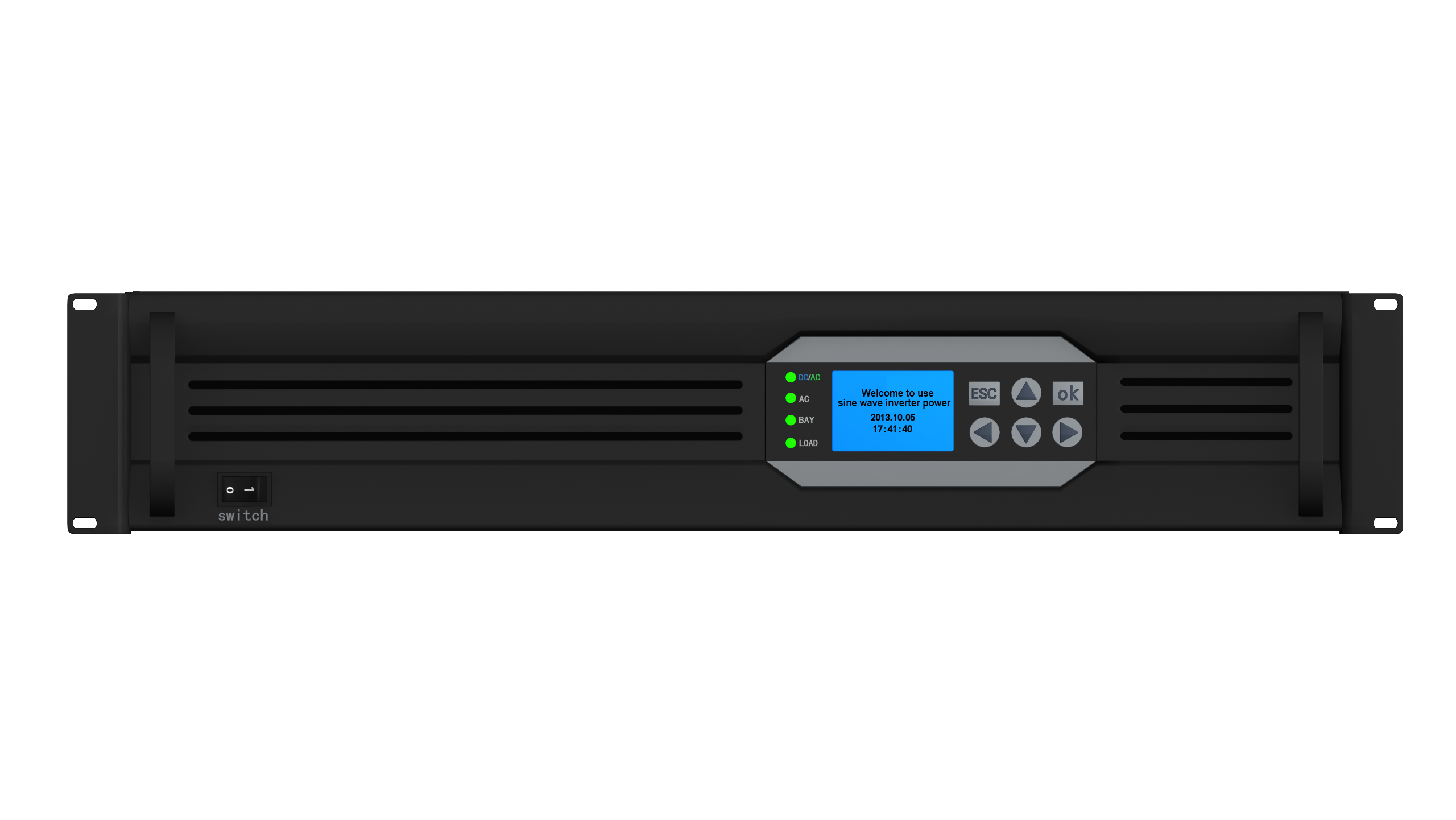
Exploring YUCOO’s Innovative Power Supply Solutions for the Telecommunication Industry
Click: 664 Date: 12/20/2023 4::44::04 PM
Exploring YUCOO's Innovative Power Supply Solutions for the Telecommunication IndustryYUCOO's Telecommunication Power Supply SolutionsYUCOO's telecommunication power supply solutions are a critical component in the telecommunication industry, providing reliable and efficient power supply for various telecommunication applications. They have been designed with high efficiency, reliability, and versatility in mind. Advanced technologies such as uninterruptible power supplies (UPS) and power distribution units (PDU) are incorporated to ensure continuous power supply and optimal power distribution within telecom networks.YUCOO's inverters, including their high-frequency telecom inverters, are central to these solutions. These inverters convert stable direct current (DC) power into alternating current (AC) power, a critical process in many telecom power systems. The inverters are known for their high efficiency, reducing power loss during the conversion process, and their reliability, built to withstand the demanding conditions of telecom operations. YUCOO offers a range of inverters to cater to different needs, providing solutions for small telecom stations to large data centers.In addition to their product offerings, YUCOO also provides comprehensive services including regular system checks, updates, and prompt repairs for their power systems. They also provide training to operators on system management, ensuring optimal operation and longevity of the systems. This commitment to customer support and service further enhances the reliability and efficiency of YUCOO's power supply solutions.YUCOO also recognizes the growing need for renewable energy and energy efficiency in telecom power systems. Their power systems can be integrated with renewable energy sources like solar or wind power, thereby promoting sustainable and green practices in the telecom industry. Their products are also designed for energy efficiency, with advanced power converters and rectifiers that minimize energy loss during power conversion.Finally, YUCOO's power supply solutions are not only efficient and reliable but also customizable. They have a strong technical team that can customize power supply solutions as per customer's request, making them a preferred choice for many telecom companies.Advanced Technologies in YUCOO's Power SuppliesYUCOO, a leading power supply manufacturer, has been pioneering in the development of power supply technologies. Here are some of the key advancements:Innovative Energy Conversion Methods: YUCOO has perfected energy conversion techniques that enhance the efficiency of their power supply products. Their advanced digital control algorithms and intelligent power management systems enable higher energy conversion rates, which lead to a decrease in power loss and an improvement in overall efficiency.Integration of Renewable Energy: In response to the global trend towards renewable energy, YUCOO has successfully incorporated renewable energy sources into their power supply solutions. This allows for the efficient use of solar, wind, and other renewable energy sources, optimizing power generation and reducing dependence on traditional fossil fuels.Intelligent Power Monitoring and Control: YUCOO's power supplies include intelligent monitoring and control systems that ensure optimal performance and energy efficiency. These systems continuously analyze power usage patterns, dynamically adjust output voltages, and manage power flow to minimize energy wastage.Enhanced Cooling and Thermal Management: Efficient cooling and thermal management are critical for power supplies to perform optimally. YUCOO has introduced innovative cooling technologies and thermal management solutions that boost the efficiency and reliability of their products. These advancements facilitate better heat dissipation, preventing overheating and maintaining consistent performance under high-demand conditions.Compact and Space-Saving Designs: YUCOO has designed their power supply products to be compact and space-saving without compromising performance. These designs not only save space but also improve airflow and reduce energy consumption.Through these technological innovations, YUCOO has significantly improved the efficiency and reliability of power supply solutions in the telecommunication industry.Safety Features of YUCOO's Power SuppliesSafety is a key aspect of any power supply product, and YUCOO, a prominent power supply manufacturer, places a lot of emphasis on integrating advanced protection features into its power supplies. Here's an overview of these safety features:Over-Current Protection (OCP): YUCOO power supplies are equipped with OCP, which comes into play when the current in the rails surpasses a certain limit. This feature protects the power supply from damage due to excessive current and prevents harm to system components.Over-Voltage and Under-Voltage Protection (OVP/UVP): These features monitor the voltages at each rail and take action when these voltages exceed or fall below a set threshold. This prevents over-voltage conditions that could potentially damage system components and ensures stable power delivery.Over Power Protection (OPP) and Over-Load Protection: These features activate when the power drawn from the power supply surpasses its maximum rated capacity. They shut down the power supply to prevent overloading and protect the system from potential damage.Short Circuit Protection (SCP): SCP consistently monitors the output rails and instantly shuts down the power supply if it detects a short circuit. This feature prevents damage or fire in case of a short circuit.Over-Temperature Protection (OTP): The OTP feature detects when the temperature of the power supply exceeds a preset threshold and immediately shuts down the power supply, preventing any damage to the power supply or the device being powered.In addition, YUCOO power supplies use a power good or PWR_OK delay signal to indicate that the outputs are within the regulation thresholds and that sufficient mains energy is stored for continuous operation. This ensures that the power supply is functioning properly and within specifications.In summary, YUCOO's power supplies prioritize safety and deliver reliable performance with their cutting-edge protection features, ensuring that your system is shielded from over-current, over-voltage, under-voltage, over-power, and short circuit scenarios.Customization and Support in YUCOO's Power Supply SolutionsIn the realm of power supply solutions, YUCOO is a key player that prides itself on offering highly customizable products and services. Their power supplies can be tailored to meet the specific needs of various industries, ranging from telecommunications to healthcare and defense. This allows YUCOO to deliver power solutions that are not only reliable but also highly efficient and adaptable to different operating conditions and requirements.YUCOO's power supplies stand out due to their ability to adjust both constant voltage and constant current values within a range of 0 to 100%. This flexibility allows their power supplies to cater to a wide range of power requirements, making them suitable for various applications.The customization process at YUCOO begins with an in-depth consultation to understand the unique requirements, challenges, and goals of each client. Leveraging their technical expertise and advanced design capabilities, YUCOO's team of experienced engineers develops customized power solutions that align with the specific needs of the industry.In addition to product customization, YUCOO also offers graphic customization, customized packaging, and even the ability to add a customized logo on their products. This level of customization extends to their customer service. YUCOO provides 24/7 technical support and after-sales service, ensuring any issues are promptly resolved and minimizing downtime.YUCOO's Impact on the Digital WorldYUCOO's impact on the digital world is significant due to its innovative AC to DC converters, which play a pivotal role in powering modern electronics. These converters are integral to devices we use daily, including household appliances, computers, televisions, and cell phone chargers. They are also critical in powering electronic sensors and modules that operate only on DC supply, and are used in various fields such as medical equipment, factory automation, building automation, and process control systems.Beyond these applications, YUCOO's AC to DC converters also contribute to renewable energy management, test & measuring equipment, defense, aerospace, and transportation systems. They are particularly important in the electrification of transportation, where power electronics play a central role in converting, controlling, and transmitting energy efficiently between the power grid and vehicles.YUCOO's AC to DC converters are recognized for their high efficiency, compact design, and robust thermal management. The company has integrated advanced thermal management techniques such as heat sinks, fans, and high-tech materials to ensure optimal temperature regulation and prevent overheating. In addition, YUCOO's converters incorporate intelligent control systems that use algorithms and sensors to monitor and adjust the converter's output, maximizing efficiency and reducing wasted energy.As technology continues to evolve, we can expect further improvements in AC to DC conversion, leading to reduced energy consumption, lower costs, and a greener future. With advancements in energy efficiency and manufacturing processes, YUCOO's converters are becoming more reliable, compact, and environmentally friendly, further solidifying their impact on the digital world.
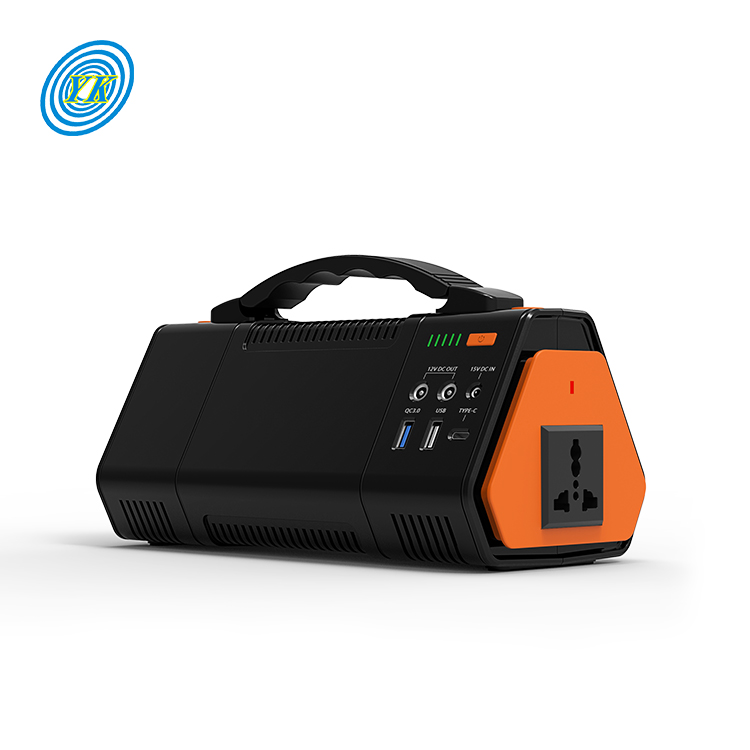
Understanding the Dynamics and Future Trends in the Portable Energy Storage Industry
Click: 661 Date: 12/19/2023 4::27::01 PM
Understanding the Dynamics and Future Trends in the Portable Energy Storage IndustryOverview of the Portable Energy Storage Industry1. IntroductionThe energy storage industry, especially the portable energy storage industry, has been attracting increasing attention worldwide due to its pivotal role in facilitating the development of smart electric grids and renewable energy. In recent years, China, as a major player in the energy sector, has made significant efforts in building a sustainable energy system and promoting the development of the energy storage industry.2. Evolution of the Portable Energy Storage Industry in ChinaThe evolution of the portable energy storage industry in China can be divided into three stages: the foundation stage, the nurturing stage, and the commercialization stage.2.1 Foundation Stage (2010-2013)During the foundation stage, the Chinese government focused on encouraging innovation in energy storage technology. In 2010, the 12th Five-Year Plan was issued, marking the first appearance of the term "energy storage" in national documents. This helped lay a solid foundation for the industry's development. The government also initiated China's first large-scale energy storage demonstration project, the "Zhangbei landscape storage demonstration project (2011)", integrating wind power generation, photovoltaic power generation, energy storage systems, and smart power transmission.2.2 Nurturing Stage (2014-2016)During the nurturing stage, the Chinese government issued more energy storage policies involving power system reform, ancillary services, technical R&D, and environmental protection. In 2014, the State Council officially issued the "Energy Development Strategic Action Plan (2014–2020)", proposing to build a clean, efficient, safe, and sustainable modern energy system. The government encouraged the application of large-scale energy storage systems and promoted the commercial development of China’s energy storage industry.2.3 Commercialization Stage (2017-2020)The commercialization stage witnessed a preliminary exploration period for the commercialization of the energy storage industry in China. The National Energy Administration promulgated the “Guiding Opinions on Promoting Energy Storage Technology and Industry Development (2017),” which first clarified the strategic position of energy storage. This stage saw the government actively promoting the commercialization of energy storage and focusing on large-scale and industrial development.3. Public Attitude Towards Energy Storage PoliciesThe public's attitude towards energy storage policies plays a crucial role in determining whether storage is widely accepted. A positive public sentiment towards energy storage policies is essential for promoting the development of the energy storage industry. In China, the public has shown more positive sentiment towards energy storage than negative sentiment, indicating a general recognition of the potential of the energy storage industry. However, the positive sentiment towards energy storage showed a decreasing trend, while the proportion of negative emotions gradually increased, indicating that there are still many obstacles to be overcome in the development of energy storage.4. ConclusionThe development of the portable energy storage industry in China has experienced rapid growth in recent years, with the government playing a significant role in its promotion. However, there still exist challenges such as incoordination of policies and a lack of market mechanism. The government needs to introduce more policies concerning market mechanism, R&D, and subsidies to enhance the effect of energy storage policies and increase public recognition. By doing so, the energy storage industry in China can further develop and contribute to the global energy transitionTechnologies Used in Energy Storage SystemsThe field of energy storage systems is vast and rapidly evolving. Here are some key technologies and concepts that are currently being used or developed, based on the information provided in the search results:"Mechanical Energy Storage Systems": Mechanical energy storage systems store energy in various forms, such as potential energy in a pumped hydroelectric storage (PHS) system or kinetic energy in a flywheel energy storage (FES) system."Electrochemical Energy Storage Systems": Electrochemical energy storage, such as batteries and supercapacitors, store energy in the form of chemical potential energy. This category includes lead-acid batteries, lithium-ion batteries, and flow batteries."Thermal Energy Storage Systems": Thermal energy storage systems store energy in the form of heat. This includes sensible heat storage, latent heat thermal storage (such as ice storage air conditioning), and thermochemical heat storage."Chemical Energy Storage Systems": Chemical energy storage involves the conversion of electricity into a different form of energy that can be stored and converted back into electricity when needed. This category includes power-to-gas technologies, biofuels, and synthetic fuels."Superconducting Magnetic Energy Storage Systems": Superconducting magnetic energy storage (SMES) systems store energy in a magnetic field created by the flow of direct current in a superconducting coil. SMES systems offer high efficiency and fast response times, making them suitable for applications requiring high power over short durations.Based on these subtopics, a potential overarching title could be "Exploring Current and Emerging Technologies in Energy Storage Systems".Applications of Portable Power SupplyThe following is a comprehensive explanation of the applications of portable power supply:"Wearable Electronics": Portable power supply is extensively used in wearable electronics such as smartwatches, fitness trackers, and health monitoring devices. The compact and lightweight nature of portable power supplies makes them ideal for these applications. They provide the necessary power for these devices to perform various functions such as tracking physical activity, monitoring heart rate, and providing connectivity to other devices."Portable Medical Devices": Portable power supplies are critical in powering portable medical devices such as portable ECG machines, insulin pumps, and hearing aids. These devices require a reliable and constant source of power to function effectively which is provided by portable power supplies. The power supplies can be easily recharged or replaced ensuring the continuous operation of these life-saving devices."Outdoor Activities and Emergencies": Portable power supplies are also useful in outdoor activities like camping where access to the grid power is limited. They can be used to power devices such as portable lights, GPS devices, and mobile phones. In emergency situations, portable power supplies can be used to power critical communication and navigation devices."Energy Harvesting": Portable power supplies can also be used in energy harvesting applications. They can store energy harvested from various sources like solar, mechanical vibrations, and body movements. This stored energy can be used to power low-energy devices such as sensors and IoT devices."Consumer Electronics": Portable power supplies are also used in a variety of consumer electronics including laptops, smartphones, tablets, and digital cameras. They provide a reliable power source for these devices, enabling them to operate for extended periods without being connected to the grid.In conclusion, portable power supplies play a critical role in powering a wide range of devices, particularly those used in portable and wearable applications. Their compact size, lightweight, and ability to provide a reliable power source make them ideal for these applications.Market Dynamics in the Battery Storage Technology SectorIntroductionThe Battery Energy Storage System (BESS) market is expanding rapidly due to increasing demand for renewable energy, falling battery prices, and the growing need for energy storage solutions. The global BESS market size was valued at $9.21 billion in 2021 and is projected to grow to $31.20 billion by 2029.Key Market DriversOne of the major factors driving the growth of the BESS market is the shift toward low carbon energy generation to reduce greenhouse gases emission. This shift has led to large investments in various battery energy storage systems across the world, especially in the residential, non-residential, and utility sectors.In addition, the increasing global population, coupled with the growing initiatives to boost rural electrification, has increased the peak energy demand. The increased rate of urbanization and the introduction of infrastructure projects have also increased the power supply-demand from utilities.Furthermore, the development of new and advanced BESS units is expected to play a significant role in industry dynamics. For instance, in March 2021, Tesvolt, a German storage system manufacturer, launched a technologically advanced product line TS-I HV 80 battery, primarily designed to shave load peaks and comply with the demand from business and industrial customers.Key Market ChallengesDespite the growth drivers, the BESS market also faces some challenges. The primary factor that hampers the BESS market growth is the requirement of substantial capital investments. These systems are mainly deployed for large BESS plants to cater to the energy demand at peak loads.Another challenge is the lack of robust regulatory framework and market standardization. Without common manufacturing codes or standards developed for energy storage devices, each manufacturer is free to develop its internal standards, which could lead to compatibility issues during installations and maintenance.Key Market TrendsInvestments in the design and manufacturing of BESS devices are expected to significantly influence industry dynamics. The exponential demand for energy resources across developing and developed countries, combined with expanding measures to ensure energy security, is set to push the market growth. Furthermore, advancements in the rising integration of new power generation technologies and revamping existing foundations have increased the requirement for new grid systems with effective backup and peak load characteristics.In terms of technology, lithium-ion batteries are currently the dominant technology in the BESS market due to their cost and performance advantages, deep discharge cycle life, energy and power density, and other attributes. However, other promising technologies like sodium-ion, sodium-sulfur, metal-air, and flow batteries are also emerging.Key Market InsightsBased on type, the lithium-ion battery segment is projected to lead the industry and hold a significant portion of the global market during the forecast period. Demand for lead-acid batteries will be fostered by the transportation sector slated to grow exponentially at the end of 2029 due to increasing hybridization of vehicle fleets and their safe & reliable operations in rechargeable systems.In terms of market segmentation, the battery energy storage market can be divided into three segments: front-of-the-meter (FTM) utility-scale installations, behind-the-meter (BTM) commercial and industrial installations, and BTM residential installations. The FTM utility-scale installations are expected to grow the fastest among these three segmentsFuture Trends in Portable Energy StorageThe future trends in portable energy storage could be categorized into several key areas based on the search results:"Integration of Energy Storage with IoT Devices": Internet of Things (IoT) devices are becoming increasingly prevalent, and the integration of energy storage systems with these devices is a key trend in the field. This integration involves the use of compact and efficient energy storage systems to power IoT devices, which can range from small sensors to larger devices like smart home appliances. This trend is driven by the need for IoT devices to operate independently of the grid and to function reliably even in the event of power outages."Improvements in Battery Technologies": Advances in battery technologies are crucial for the development of more effective and efficient portable energy storage systems. These advancements can include the development of new materials for batteries, improvements in battery design, and enhancements in charging technologies. Researchers are exploring various avenues to increase energy density, enhance safety, reduce cost, and improve the lifetime of batteries."Development of Hybrid Energy Storage Systems": Hybrid energy storage systems combine different types of energy storage technologies to leverage the advantages of each. For example, a system might combine batteries with flywheels or supercapacitors to achieve both high energy density and high power density. These systems can offer improved performance, flexibility, and efficiency compared to single-technology systems."Adoption of Renewable Energy Storage": With the growing emphasis on renewable energy sources, there is a corresponding increase in demand for energy storage systems that can efficiently store and dispatch renewable energy. These systems need to be capable of handling the intermittent nature of renewable energy sources like wind and solar. Developments in this area include the use of flow batteries, pumped hydro storage, and thermal energy storage systems."Advancements in Energy Storage Systems for Electric Vehicles (EVs)": The growing market for EVs is driving advancements in energy storage systems specifically designed for these vehicles. This includes efforts to increase the energy density of batteries, reduce charging times, and improve the lifetime and safety of the batteries
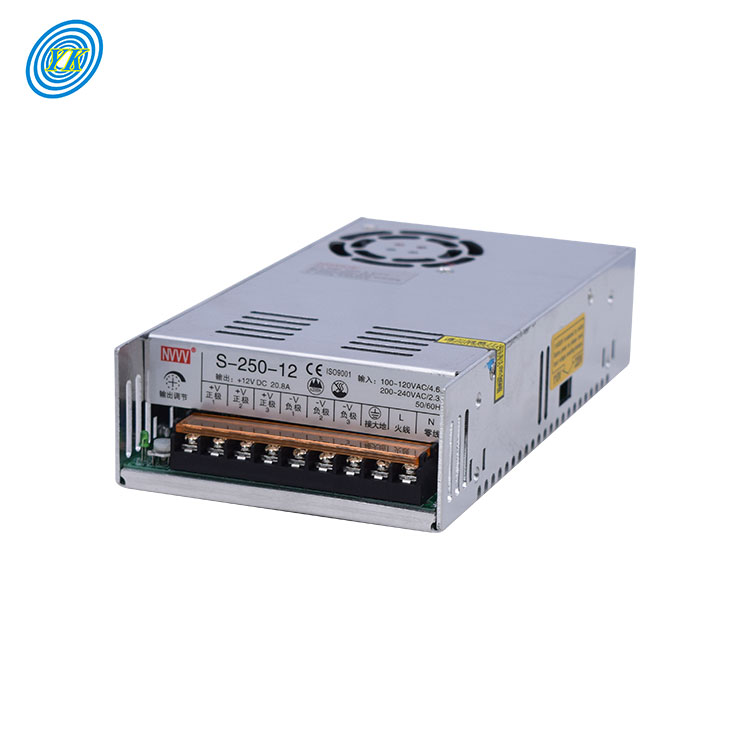
Click: 751 Date: 12/18/2023 10::00::30 AM
Comprehensive Guide to Switching Power Supply: From Basic Understanding to Design Techniques, with a Special Focus on Yucoo's Switch Power SupplyUnderstanding the Basics of Switching Power SupplySwitching Power Supplies (SMPS) are a prevalent and sometimes necessary choice for DC-DC power conversion. These circuits offer distinct advantages and tradeoffs when compared to other methods of converting DC power. This article will present an easy-to-understand overview of the basics of Switching Power Supplies.Why Switching Power Supplies?Most electronic DC loads are powered from standard power sources. However, the voltages these sources provide may not align with the levels required by various devices like microprocessors, motors, or LEDs, especially when the source voltage is unregulated. For instance, the voltage of a standard Li+ cell or NiMH stack could be either too high or low, or drop too far during discharge to be used in conventional applications.Versatility and CustomizationSwitching Power Supplies offer a solution to the problem of converting a standard source voltage into a usable, specified output voltage. There are numerous SMPS topologies to step up, step down, invert, or even step up and down the input voltage. This versatility makes SMPSs attractive as a topology can be selected to fit nearly any output voltage.Modern SMPS ICs are designed with varying levels of integration, enabling engineers to choose among topologies with more or fewer of the standard SMPS features brought into the IC. This flexibility eases the design burden for commonly used, application-specific power supplies or offers engineers basic SMPS ICs for custom projects.EfficiencyEfficiency is a common concern when converting DC power. For instance, stepping down an input voltage to achieve a lower output voltage often requires an efficient solution. A simple solution would be to implement a linear regulator, but this method can become inefficient, especially if the voltage differential is large.A well-designed SMPS can achieve 90% efficiency or more, depending on the load and voltage levels. This high efficiency is the primary advantage of SMPS designs and leads to other benefits, such as a reduced thermal footprint and increased component lifetime due to improved reliability.Disadvantages and Tradeoffs of SMPSsDespite their high efficiency, SMPSs do have drawbacks. The most often cited issue regarding switch-mode converters is their tendency to radiate electromagnetic interference (EMI) and conduct noise. Fortunately, good component placement and PCB layout techniques can successfully combat EMI and reduce noise.SMPSs can also be complex and require additional external components, which can increase the overall cost of the power supply. However, most SMPS IC manufacturers provide detailed literature about device operation and choosing correct external components, which can help manage these issues.In conclusion, despite some challenges, SMPSs are widely used due to the efficiency and versatility they offer. They are a necessary component in many applications and often required for achieving highly efficient, reliable DC-DC power-conversion systems.Design Principles and Techniques of Switch Mode Power SupplySwitch mode power supplies (SMPS) are a fundamental component in many electronic devices due to their efficiency in converting power. They operate by switching the input current on and off rapidly to stabilize the output voltage. This article will delve into the design principles and techniques of SMPS.1. Understanding SMPSSwitch mode power supplies operate differently from linear power supplies. While linear power supplies operate continuously, SMPS switch on and off rapidly, controlling the transferred energy by varying the duty cycle, the proportion of time the switch is on versus off. This method improves efficiency, reduces size and weight, and allows for a wide input voltage range.2. Basic Design PrinciplesThe design of a SMPS is guided by several principles. First, the choice of the topology is crucial and depends on the application requirements. Common topologies include flyback, forward, buck, and boost converters. Each has its advantages and trade-offs in terms of complexity, efficiency, cost, and performance. Second, the design must ensure stability throughout the operating range. This involves careful selection and placement of components such as inductors and capacitors. Third, the design must consider the control strategy, such as pulse width modulation (PWM) or resonant mode control, which affects the performance and complexity of the power supply.3. Techniques for Improving PerformanceSeveral techniques can improve the performance of a SMPS. For example, synchronous rectification can enhance efficiency by replacing diodes with controlled switches, reducing power losses. Furthermore, soft-switching techniques can minimize switching losses and electromagnetic interference (EMI). Additionally, digital control methods can provide flexibility, precision, and advanced features, such as fault protection and communication capabilities.4. Design ConsiderationsDesigning a SMPS involves many considerations. For instance, the power supply layout should minimize parasitic elements and EMI. The selection of components should consider factors like efficiency, cost, size, and thermal management. Safety standards and regulations, such as those related to EMI and efficiency, must also be taken into account.5. Case Study: High-Efficiency SMPS Design with Advanced FeaturesAn example of a high-efficiency SMPS design is the use of gallium nitride (GaN) devices, which can operate at higher frequencies and temperatures than traditional silicon devices, allowing for smaller, more efficient power supplies. Advanced features such as digital control and communication (PMBus) can also be incorporated to provide precise control, fault protection, and system-level power management.In conclusion, the design of switch mode power supplies involves a blend of principles, techniques, and practical considerations. The goal is to create a power supply that meets the application requirements in the most efficient, reliable, and cost-effective manner.Exploring Power Supply Switching in Multi-Source SystemsThe operation of modern power systems depends heavily on the reliability and efficiency of power supply systems. In multi-source systems, the process of power supply switching plays a crucial role in maintaining consistent and safe power delivery. This article explores the concept of power supply switching in multi-source systems, focusing on strategies to manage voltage sags, control active and reactive currents, and ensure safe operation.Voltage sags in power systems can lead to significant issues, such as the disconnection of distributed generation and failure of electrical equipment. One of the cutting-edge solutions to this problem is the use of a flexible multi-state switch (FMSS). This novel type of power electronic equipment is capable of supporting the voltage during grid faults, providing a stable power supply even in challenging conditions.A critical aspect of power supply switching in multi-source systems is the control of active and reactive currents. A positive-negative-sequence compensation (PNSC) scheme can be utilized to manage these currents effectively. By eliminating active power oscillations at the port of voltage sags and reducing coupling oscillations of other ports, the PNSC scheme ensures the smooth operation of the power supply system.To support the voltage in a distribution network, a voltage control strategy can be proposed by introducing a three-port FMSS. This approach is based on the characteristics of the voltage support under the PNSC scheme, and it involves two main strategies. First, a proportional-integral controller can be introduced to provide the reactive power references, which eliminates the errors when estimating the grid voltage and impedance. Second, a current limiting scheme can be adopted to keep the port current in a safe range by adjusting the active and reactive power references.The successful implementation of these strategies can significantly enhance the performance of power supply switching in multi-source systems. Simulations of the voltage support strategies in two different voltage sags demonstrate the feasibility and effectiveness of the proposed control strategies. These results provide valuable insights for the design and operation of power supply systems in various applications, from industrial facilities to residential buildings.In conclusion, power supply switching in multi-source systems is a complex but critical process. By using advanced control strategies and power electronic equipment, it is possible to overcome the challenges associated with voltage sags and current control, ensuring the reliable and efficient operation of the power supply system. As the demand for electricity continues to grow, the importance of optimizing power supply switching in multi-source systems will only increase.The Role of PWM Control Circuit in Switching Power SupplyThe Pulse Width Modulation (PWM) control circuit plays a pivotal role in the operation of a switching power supply. It essentially controls the on and off states of the power switches, which are integral components of the power supply. This control mechanism is vital for the efficient regulation of output voltage and the overall performance of the power supply.The PWM control circuit operates by generating a series of pulses. The width of these pulses (hence the term "pulse width modulation") can be adjusted according to the power supply's requirements. This width is directly correlated to the amount of energy transferred to the output of the power supply. A wider pulse means more energy is transferred, resulting in a higher output voltage, and vice versa.In a switching power supply, the PWM control circuit interacts with other components such as the power switches, the input voltage source, and the load. When the input voltage and load conditions change, the PWM control circuit adjusts the pulse width accordingly to maintain a stable output voltage. This is done by comparing the actual output voltage with a reference voltage, and adjusting the pulse width to minimize the difference between the two.A key advantage of using a PWM control circuit in a switching power supply is its high efficiency. Since the power switches are either fully on or fully off, they do not operate in their linear region, which would result in higher power losses. Moreover, by precisely controlling the energy transfer, the PWM control circuit can ensure that the power supply operates at its optimal point, further improving its efficiency.Furthermore, PWM control circuits can also provide additional functions such as over-voltage protection, under-voltage protection, and over-current protection. These features enhance the reliability and safety of the power supply.In conclusion, the PWM control circuit is a crucial part of a switching power supply. It is responsible for regulating the output voltage, improving the efficiency, and ensuring the safe operation of the power supply. As technology advances, PWM control circuits will continue to evolve, offering even better performance and additional features for switching power supplies.Improving Electromagnetic Compatibility in Yucoo Switch Power SupplyIn the modern world, switch power supplies are a crucial component of many electronic devices. They convert electrical power efficiently and effectively, but one of the challenges they present is electromagnetic interference (EMI). This article will focus on improving electromagnetic compatibility (EMC) in Yucoo switch power supplies.EMI has long been a concern with switching power supplies. Their high-frequency switching of voltage and current generate higher order harmonics that have the potential to cause interference with system operation. To mitigate this issue, optimal solutions must come from techniques applied during the design process.One of the significant causes of EMI in power supplies is the rapidly changing currents and voltages, which generate electronic noise. This noise may be induced by coupling between circuit elements through the action of either a magnetic or an electric field.In the case of Yucoo switch power supplies, several strategies can be employed to improve EMC. Firstly, careful attention should be paid to the design and layout of the circuitry. Minimizing current loops and containing magnetic fields is a proactive way of reducing EMI at its source. This can be achieved by designing transformers for switch mode usage that minimize leakage inductance between primary and secondary windings.Another strategy involves the use of shielding. Shields of non-magnetic, conductive material can be used for magnetic fields. The process involves the magnetic noise inducing eddy currents to flow in the enclosure, which in turn generate a canceling magnetic field.The use of filters is another effective way of reducing EMI. Filters can be designed to provide current attenuation between the power supply and the power source, reducing both differential mode (DM) and common mode (CM) noise.Lastly, the use of flux straps or "belly bands" around transformers can help reduce stray magnetic fields. These copper bands provide a path for the eddy currents that result from the leakage inductance magnetic dipole, creating an opposing magnetic field that cancels the original field at close proximity to the transformer.In conclusion, improving EMC in Yucoo switch power supplies involves a combination of careful circuit design, effective shielding, the use of filters, and the application of flux straps. By implementing these strategies, the performance of Yucoo switch power supplies can be significantly improved, minimizing the potential for EMI and ensuring efficient and effective operation.
